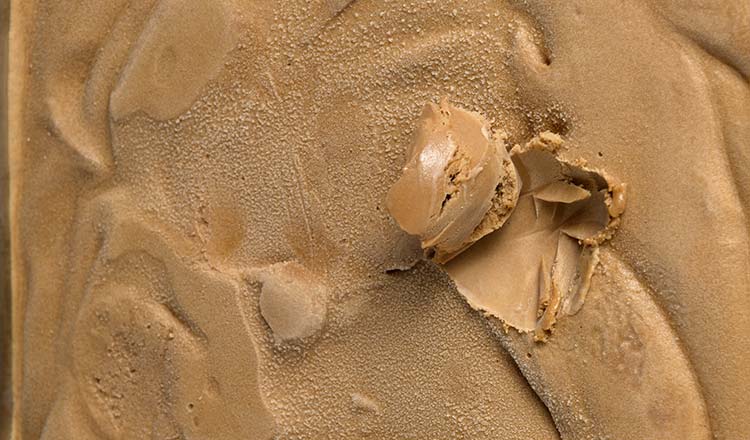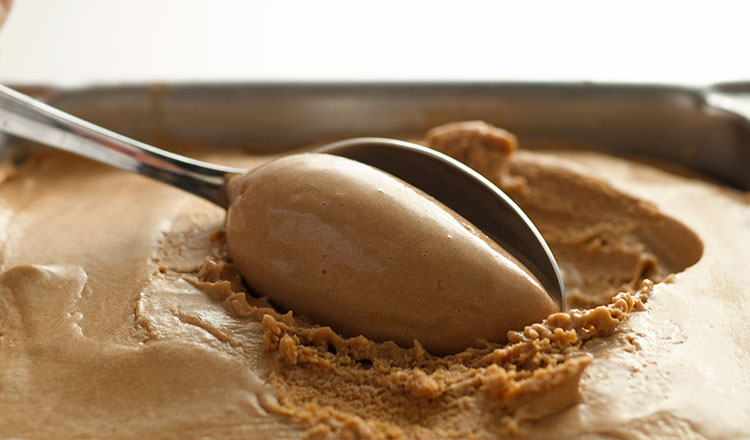If you are a homemade ice cream maker, you already know that a great base is all you need to make just about any flavor. But part of the fun of making things yourself is experimenting with new recipes and flavors, which can sometimes lead to disappointing results. Of course, when you understand the fundamentals of what you’re making, it becomes easier to identify the problem and avoid it the next time.
Ice cream is an emulsion of liquid and fat ingredients that are churned as it freezes to create air pockets and ice crystals. When the balance of ingredients isn’t quite right, the final ice cream can be grainy, icy (like the ice cream in the photo below), or too dense, making it unscoopable.

All the ingredients add flavor to the ice cream, but each one also plays a part in determining consistency and mouthfeel. The eggs in custard ice cream make it richer and smoother than its eggless counterpart, both because of the fat, protein, and emulsifiers contributed by the egg yolks and because cooking the proteins present in the eggs binds or holds moisture. This interferes with the formation of ice crystals and results in smaller ice crystals, thus lending a smoother texture to the finished ice cream
The cream and eggs in ice cream allow for the incorporation of air during freezing. The air incorporated into ice cream, known as overrun, gives it a smoother mouthfeel and lighter body. Too much overrun, however, will diminish the flavor, make the ice cream too soft, and make it melt quickly. Overrun amounts, indicated in percentages, represent the amount of air contained in the ice cream. The legal limit for overrun imposed by the FDA is 100 percent, which would indicate the ice cream was increased in volume by half.
The solids present in milk and cream interfere with the formation of ice crystals, while their emulsifiers help to bind together the liquids and fats. Both of these actions affect mouthfeel, as they result in a finer, smoother texture.
Milk powder is often added to ice cream made without eggs. It helps to bind excess liquid in the base that would otherwise result in the formation of large ice crystals.
For best results, use a mixture of milk and cream to avoid having too much butterfat in the mix. The butterfat content of ice cream typically ranges from 10 to 18 percent. Butterfat is important, as it contributes both flavor and richness of mouthfeel. However, too much fat will result in an undesirable grainy mouth feel. For the same reason, use care in adding ingredients high in fat such as white chocolate, so as not to increase the fat content of the ice cream to an undesirable level.
Sugar both adds sweetness and lowers the freezing point of the base, keeping the ice cream from freezing too hard. Invert sugars improve texture and help prevent the formation of large ice crystals.


